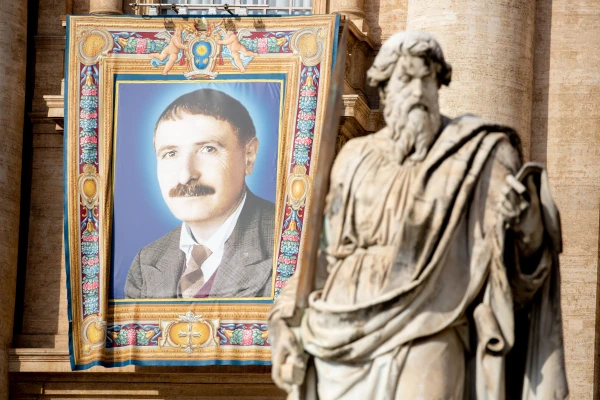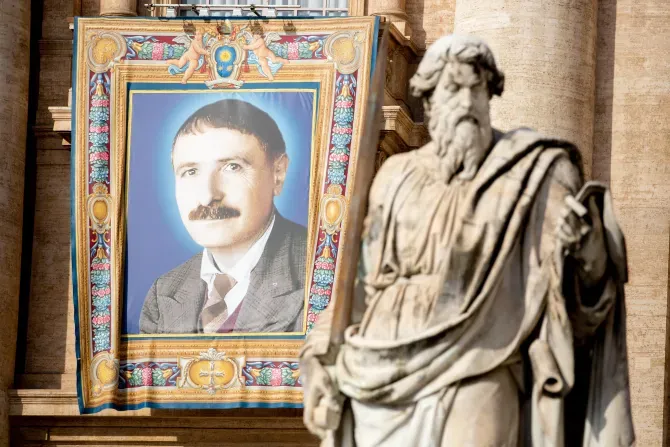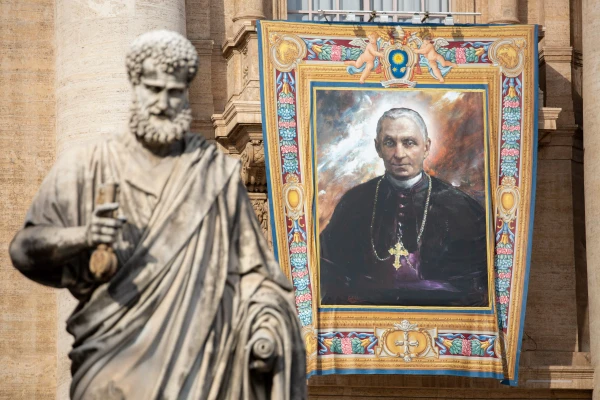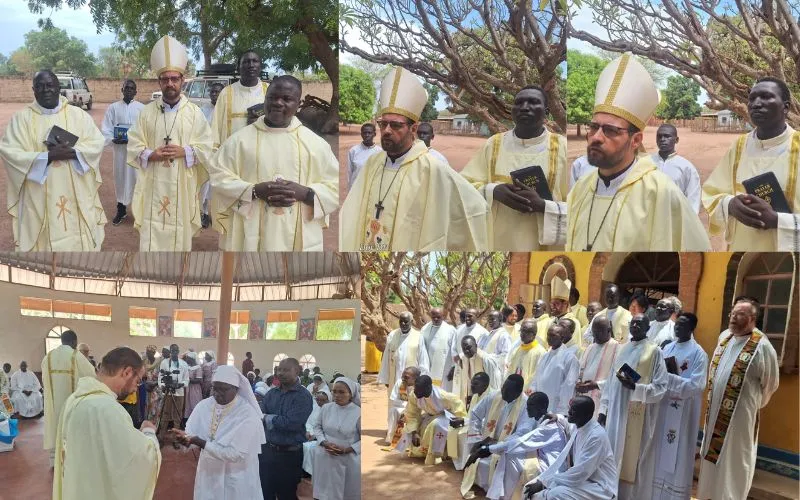 Banner of St. Artemide Zatti at his canonization Mass on Oct. 9, 2022. Daniel Ibanez/CNA
Banner of St. Artemide Zatti at his canonization Mass on Oct. 9, 2022. Daniel Ibanez/CNA
Pope Francis praised Zatti as “a living example of gratitude.” He highlighted in his homily how the immigrant nurse thanked God by “taking upon himself the wounds of others.”
“Cured of tuberculosis, he devoted his entire life to serving others, caring for the infirm with tender love. He was said to have carried on his shoulders the dead body of one of his patients,” the pope said.
Zatti was born into extreme poverty in Italy in 1880. At the age of 9, he was already helping his parents by working as a farmhand before his family emigrated to Argentina.
As a young man, Zatti attended a Catholic parish run by the Salesians of Don Bosco in the Argentine town of Bahía Blanca. At 20 years old, he joined the candidacy to become a Salesian priest.
(Story continues below)
While living in the Salesian community, Zatti contracted tuberculosis after caring for a young priest with the disease.
One of the Salesian priests, a nurse, suggested that Zatti pray for the intercession of Mary Help of Christians, making a promise that if he was healed, he would devote his life to helping the sick.
Zatti willingly made the promise and was healed of the tuberculosis. He later said about the event: “I believed, I promised, I was healed.”
The young Italian immigrant gave up the idea of the priesthood and became a Salesian Coadjutor Brother, a lay role so that he could devote himself to service in the medical field.
In 1915, at the age of 35, Zatti became the director of the Salesian-run hospital in Viedma, a city in central Argentina. Two years later he also became the manager of the pharmacy and received his license as a professional nurse.
He not only worked in the hospital but also traveled to the peripheries of Viedma and the neighboring city of Carmen de Patagones to treat people in need, and his reputation as a saintly nurse spread throughout that area of Argentina.
Zatti always saw Jesus in each of his patients. Some people even recalled seeing him carry the body of a patient who had died during the night to the mortuary as he recited the De Profundis, a prayer for the dead which comes from the text of Psalm 130.
People who knew him said that Zatti carried out his service to the sick with heroic sacrifice and that he radiated the light of God, even bringing some unbelievers to faith.
In 1950, after falling from a ladder, Zatti began to show signs of liver cancer. He continued to work, but on March 15, 1951, at the age of 70, he died from the disease.
He is the first Salesian coadjutor to be declared a saint. His feast day will be celebrated on Nov. 13.
Angelus
At the end of the canonization Mass, Pope Francis prayed the Angelus in Latin with the crowd.
The pope noted that Maria Costanza Panas, a Poor Clare nun who offered her sufferings for the Second Vatican Council, will be beatified in Fabriano, Italy, on the same day as the canonization.
The Catholic Church will mark the 60th anniversary of the opening of the Second Vatican Council on Oct. 11.
“Regarding the beginning of the Council 60 years ago, we should not forget the danger of nuclear war that menaced the world right at that time. Why don’t we learn from history? Even at that moment, there were conflicts and huge tensions, but the way of peace was chosen,” Pope Francis said.
He added: “It is written in the Bible: ‘Thus says the Lord: Stand by the roads, and look, and ask for the ancient paths, where the good way is; and walk in it, and find rest for your souls’” (Jer 6:16).
“And now let us turn to the Virgin Mary that she might help us be witnesses of the Gospel, enlivened by the example of the saints,” Pope Francis said.
Courtney Mares is a Rome Correspondent for Catholic News Agency. A graduate of Harvard University, she has reported from news bureaus on three continents and was awarded the Gardner Fellowship for her work with North Korean refugees.




 Banner of St. Giovanni Battista Scalabrini at his canonization Mass on Oct. 9, 2022. Daniel Ibanez/CNA
Banner of St. Giovanni Battista Scalabrini at his canonization Mass on Oct. 9, 2022. Daniel Ibanez/CNA
 Banner of St. Artemide Zatti at his canonization Mass on Oct. 9, 2022. Daniel Ibanez/CNA
Banner of St. Artemide Zatti at his canonization Mass on Oct. 9, 2022. Daniel Ibanez/CNA


